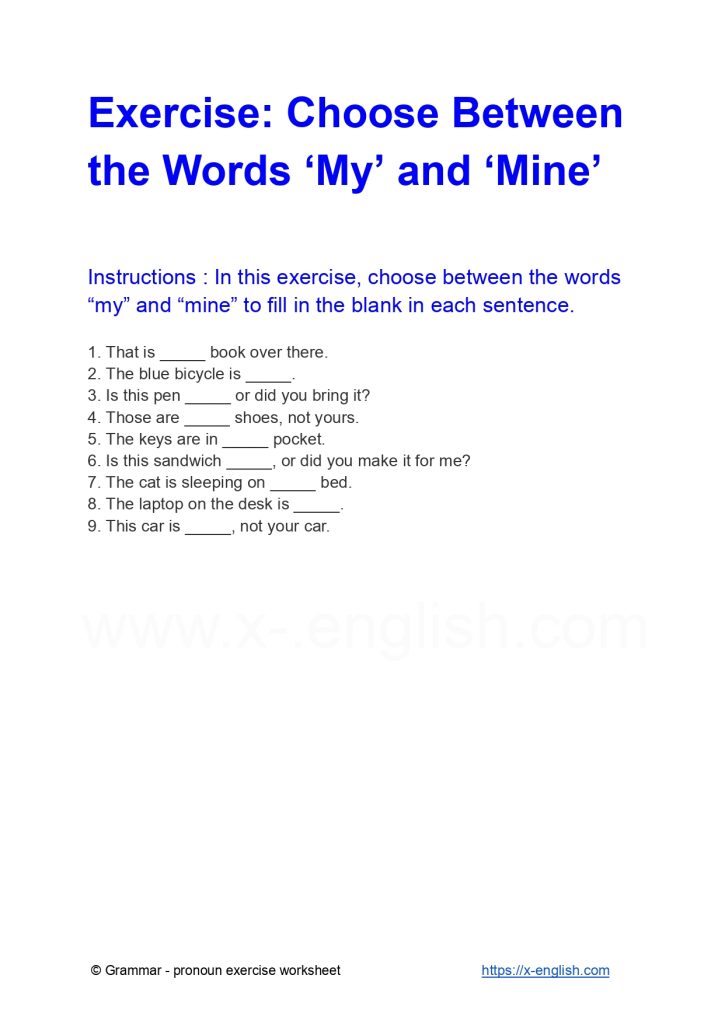Difficulty Level : Intermediate / Proficient / Advanced / Skilled
‘My’ vs ‘Mine’: What’s the Difference?
“My” is used before a noun to indicate ownership by or association with the speaker. For example, “my book” means the book belongs to the speaker.
“Mine” is used without a noun. It stands alone to show ownership by the speaker. For example, “The blue bicycle is mine” means the bicycle belongs to the speaker.
Exercises: my or mine
Instructions : In this exercise, choose between the words “my” and “mine” to fill in the blank in each sentence.
- That is _____ book over there.
- The blue bicycle is _____.
- Is this pen _____ or did you bring it ?
- Those are _____ shoes, not yours.
- The keys are in _____ pocket.
- Is this sandwich _____, or did you make it for me ?
- The cat is sleeping on _____ bed.
- The laptop on the desk is _____.
- This car is _____, not your car.
Answers to ‘my’ vs ‘mine’ exercises
- That is my book over there.
- The blue bicycle is mine.
- Is this pen mine or did you bring it?
- Those are my shoes, not yours.
- The keys are in my pocket.
- Is this sandwich mine, or did you make it for me?
- The cat is sleeping on my bed.
- The laptop on the desk is mine.
- This car is mine, not your car.
Explanations to My vs Mine exercises
- That is my book over there.
– Here, we use “my” before the noun “book” to show that the book belongs to the speaker. - The blue bicycle is mine.
– In this case, we use “mine” without a noun to show that the bicycle belongs to the speaker. - Is this pen mine or did you bring it?
– “Mine” is used without a noun to ask whether the pen belongs to the speaker or if someone else brought it. - Those are my shoes, not yours.
– We use “my” before the noun “shoes” to indicate that the shoes belong to the speaker. - The keys are in my pocket.
– “My” is used before the noun “pocket” to indicate that the pocket belongs to the speaker. - Is this sandwich mine, or did you make it for me?
– “Mine” is used alone to inquire if the sandwich belongs to the speaker or if it was made for them. - The cat is sleeping on my bed.
– Here, “my” is used before the noun “bed” to show that the bed belongs to the speaker. - The laptop on the desk is mine.
– “Mine” is used alone to indicate that the laptop belongs to the speaker. - This car is mine, not your car.
– In this sentence, “mine” is used without a noun to emphasize that the car belongs to the speaker and not to someone else.
